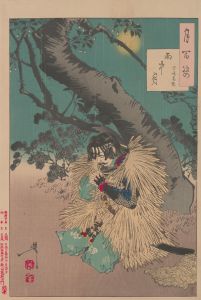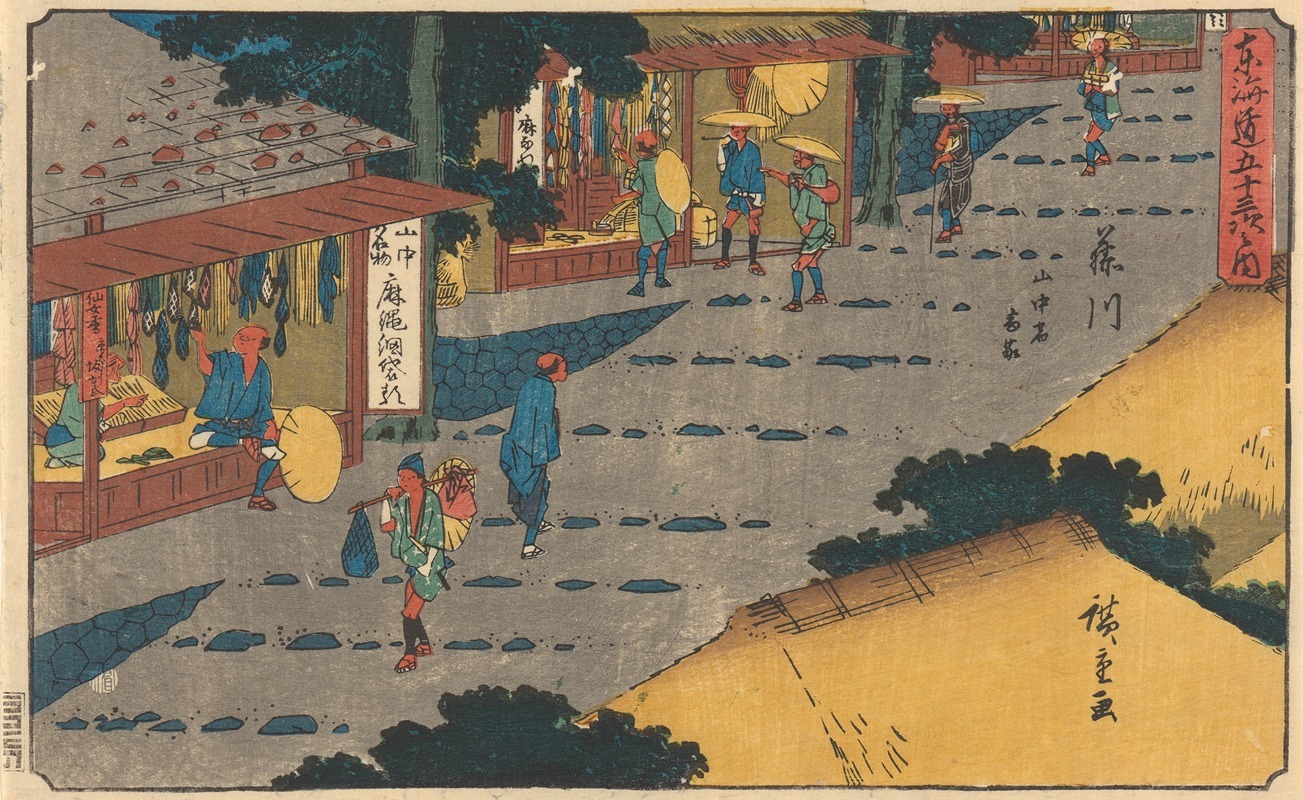
Fujikawa
A hand-painted replica of Andō Hiroshige’s masterpiece Fujikawa, meticulously crafted by professional artists to capture the true essence of the original. Each piece is created with museum-quality canvas and rare mineral pigments, carefully painted by experienced artists with delicate brushstrokes and rich, layered colors to perfectly recreate the texture of the original artwork. Unlike machine-printed reproductions, this hand-painted version brings the painting to life, infused with the artist’s emotions and skill in every stroke. Whether for personal collection or home decoration, it instantly elevates the artistic atmosphere of any space.
Andō Hiroshige, a renowned Japanese ukiyo-e artist of the Edo period, is celebrated for his landscape prints and series that capture the essence of Japan's natural beauty and cultural heritage. One of his notable works is "Fujikawa," which is part of his acclaimed series "The Fifty-three Stations of the Tōkaidō" (Tōkaidō Gojūsan-tsugi no Uchi). This series, created in the early 1830s, depicts the various stations along the Tōkaidō road, a vital route connecting Edo (modern-day Tokyo) to Kyoto.
"Fujikawa" is the thirty-eighth print in this series and illustrates the Fujikawa-juku, one of the post stations along the Tōkaidō. The Tōkaidō road was the most important of the Five Routes of the Edo period, facilitating travel and commerce between the shogunate's capital and the imperial city. Hiroshige's series captures the diverse landscapes and daily life of travelers along this route, offering a glimpse into the Edo period's culture and environment.
In "Fujikawa," Hiroshige employs his signature style, characterized by a keen attention to detail, vibrant colors, and a harmonious composition that balances human activity with the surrounding landscape. The print typically features travelers and locals engaged in various activities, set against the backdrop of the natural scenery that defines the Fujikawa area. The depiction of Mount Fuji, a recurring motif in Hiroshige's work, often serves as a focal point, symbolizing both the beauty and the cultural significance of the region.
Hiroshige's work is distinguished by his ability to convey the transient beauty of nature and the changing seasons, a concept deeply rooted in Japanese aesthetics. His use of perspective and innovative compositions influenced not only Japanese art but also Western artists, particularly during the Japonisme movement in the late 19th century. Artists such as Vincent van Gogh and Claude Monet drew inspiration from Hiroshige's prints, incorporating elements of his style into their own work.
The "Fifty-three Stations of the Tōkaidō" series, including "Fujikawa," was produced using the traditional ukiyo-e woodblock printing technique. This involved a collaborative process where the artist, carver, printer, and publisher each played a crucial role. Hiroshige's designs were carved into cherry wood blocks, inked, and then pressed onto paper, allowing for multiple copies to be produced. This method made ukiyo-e prints accessible to a wide audience, contributing to their popularity during the Edo period.
Hiroshige's "Fujikawa" not only serves as an artistic masterpiece but also as a historical document, providing insight into the travel culture and landscapes of 19th-century Japan. The print, like others in the series, captures the spirit of the Tōkaidō and the people who traversed it, reflecting the interconnectedness of nature, culture, and daily life in Hiroshige's time. Through his work, Hiroshige has left a lasting legacy that continues to be appreciated for its artistic beauty and historical significance.





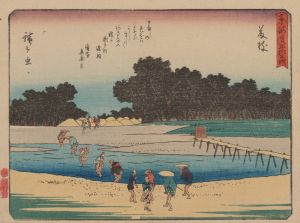
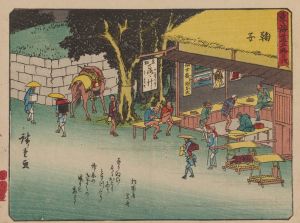
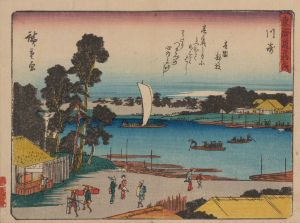
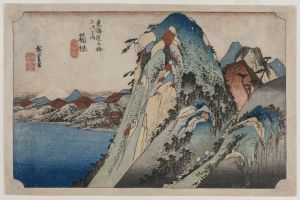
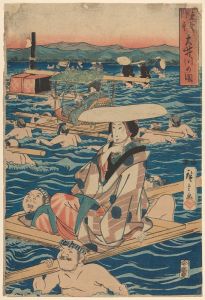
![Tora-no-mon-gai; Aoi Hill, Outside the Tiger Gate [Tora-no-mon]](/imgs/213040/s/ando-hiroshige-toranomongai-aoi-hill-outside-the-tiger-gate-toranomon-6629cde0.jpg)
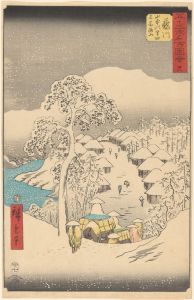
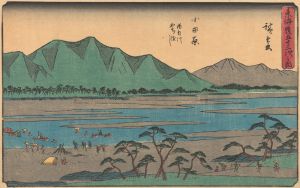
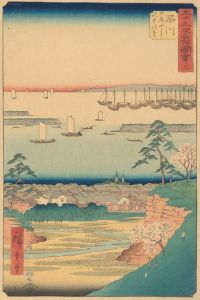
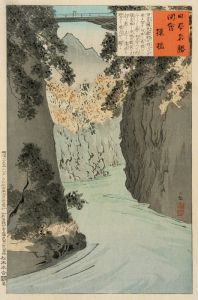
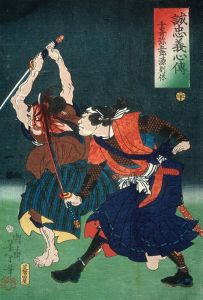

![Musha]taira no tomomori](/imgs/225657/s/tsukioka-yoshitoshi-mushataira-no-tomomori-bb591b96.jpg)
